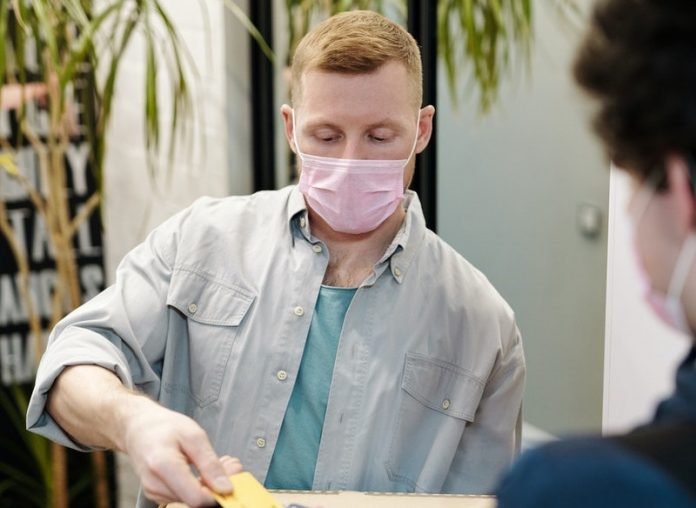
In a new study, researchers found that wearing a face mask or other covering over the mouth and nose reduces the forward distance traveled by an exhaled breath by more than 90%.
They tested the effectiveness of seven types of face-covering—including medical-grade and home-made masks—found that they could all potentially help limit the spread of COVID-19.
However, some of the masks enabled strong jets of air to escape from the back and sides.
The findings could aid policymakers in producing guidance on the wearing of masks to help combat the virus.
The research was conducted by a team from Heriot-Watt University and elsewhere.
In the study, the team assessed different face coverings using a technique called Background Oriented Schlieren imaging, which enables scientists to measure the distance and direction traveled by air expelled when a person breathes or coughs.
Measurements were taken from people wearing different face coverings while standing or lying down, and from a manikin connected to a cough-simulating machine.
They found that all face coverings without an outlet valve reduce the forward distance traveled by a deep breath out by at least 90 percent.
A type of mask commonly worn by workers exposed to fine dust—called a respirator mask—was shown to provide protection to the wearer.
However, the valves on these masks that made breathing easier could potentially allow infectious air to spread considerable distances in front.
Surgical masks and the tested hand-made masks were found to limit the forward flow of expelled breath, but also generate far-reaching leakage jets to the side, behind, above and below.
Heavy breathing and coughing, in particular, were shown to generate intense backward jets.
The team says only masks that form a tight seal with the face were found to prevent the escape of virus-laden fluid particles.
Full-face shields worn without masks enabled the release of a strong downward jet.
The team also discovered that a regular medical procedure is known as extubation—the removal of a breathing tube used during anesthesia and when patients are on a ventilator—may increase the risk of spreading COVID-19.
Simulations showed the coughing that regularly accompanies extubation caused people nearby to be enveloped in the patients’ exhaled air. This puts clinicians and others at high risk of exposure to the virus.
The team says even a hand-made mask performed very well in preventing the frontal spread of the wearer’s exhaled breath.
While this is positive, wearers of hand-made face masks need to be aware that jets of air can leak out of the sides and back of their masks.
This could be particularly important when using masks on public transport, where sitting behind someone wearing a mask could be more of a hazard than sitting directly facing them.
The lead author of the study is Dr. Cathal Cummins, an assistant professor in the Department of Mathematics and Institute for Infrastructure & Environment.
The study is published in arXiv.
Copyright © 2020 Knowridge Science Report. All rights reserved.



